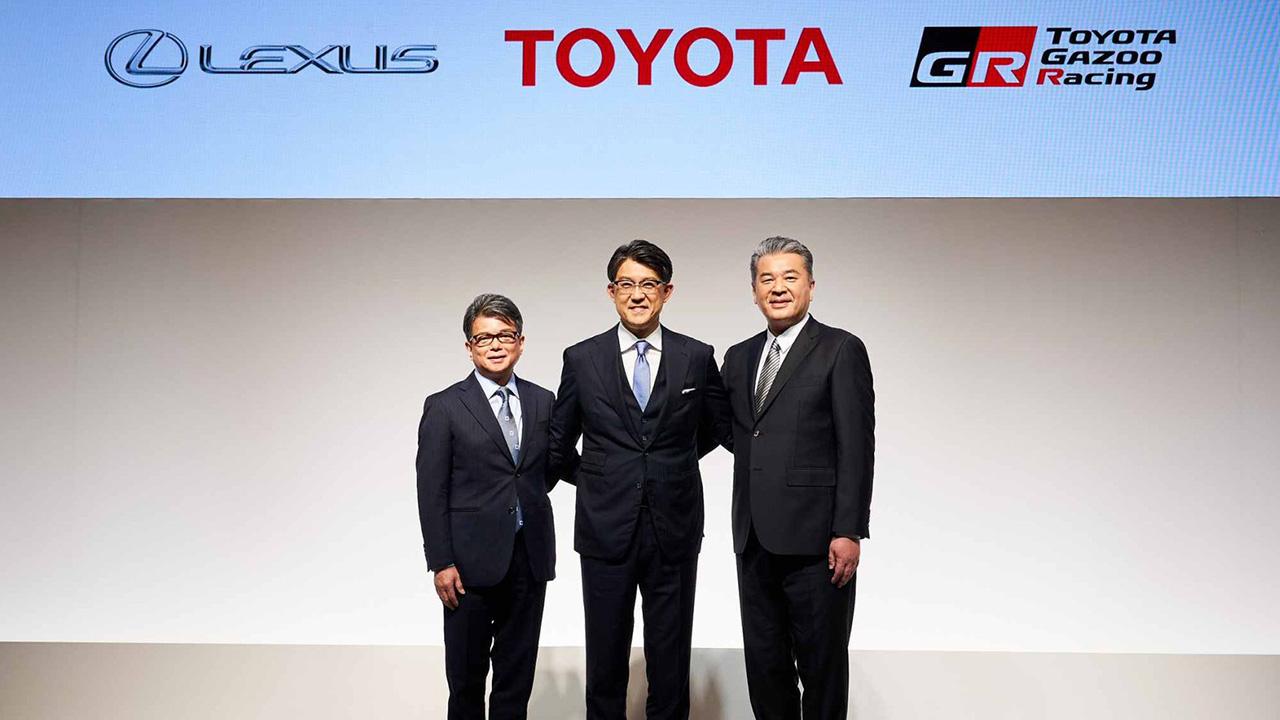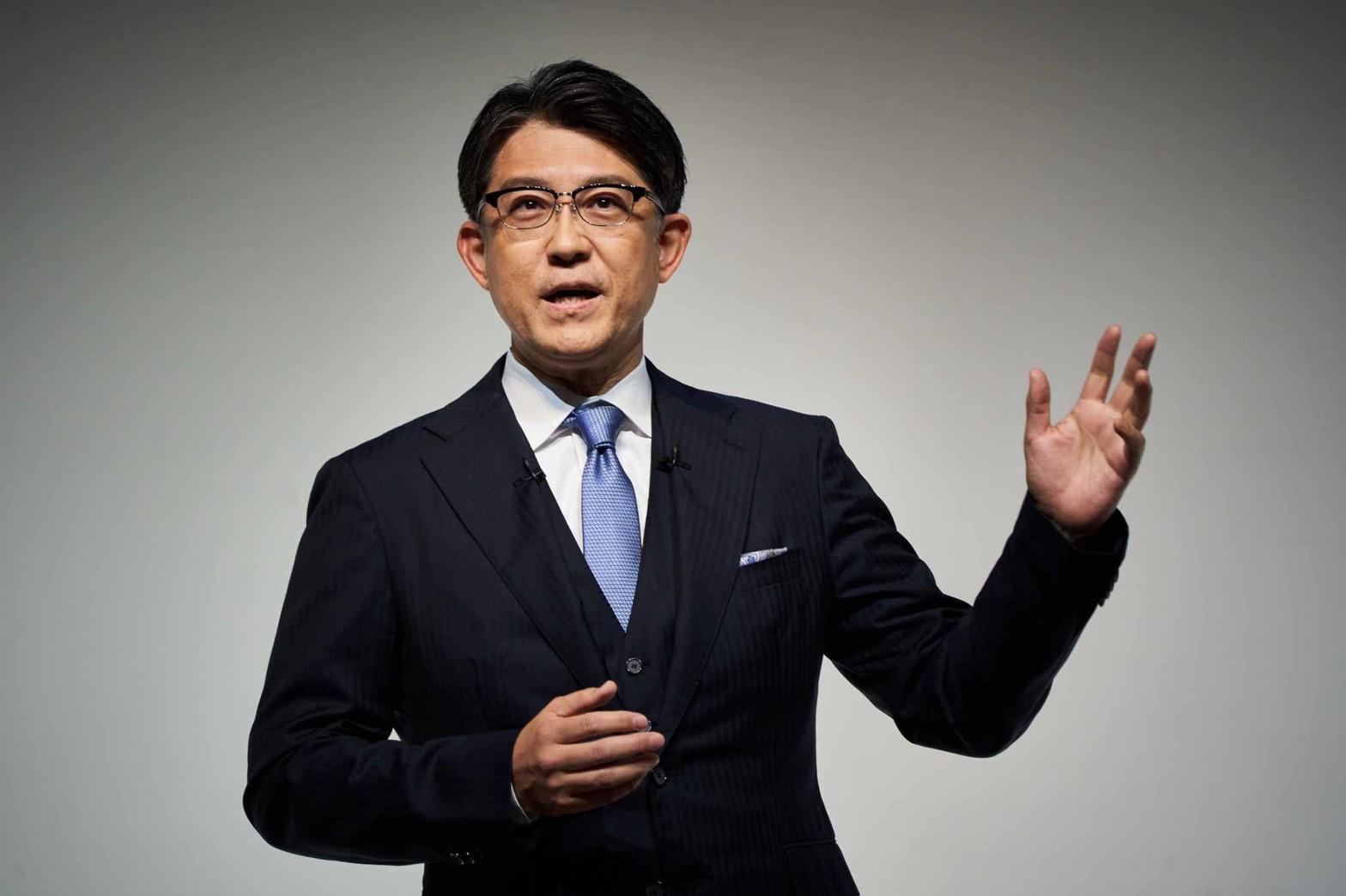
The eyes of the world were on a recent briefing about Toyota's new management structure. There, new President Koji Sato explained the journey of transformation into a mobility company.

On April 7, President Koji Sato led a press conference unveiling the company's direction under the new management team he leads.
President Sato revealed two pillars of the Toyota Mobility Concept that will help usher in the mobility society that Toyota is aiming for: "carbon neutrality" and "expanding the value of mobility."
News reports that came out later focused on hard figures like "10 additional BEV models by 2026" and "BEV sales of 1.5 million units a year."
Those numbers were, of course, part of the briefing, but President Sato was followed by Vice President Hiroki Nakajima and Vice President Yoichi Miyazaki, who spoke about product-centered management and region-centered management, to give a more concrete vision of the Toyota Mobility Concept.
President Sato retook the podium at the end and finished his final speech with a call to action, "Let's change the future of the automobile! That is the idea driving this team to build a mobility company!" Toyota Times delivers that speech uncut.
Management by products: The origin of Carmaker Toyota
President Sato

Our new management structure kicked off at the start of April.
First, I would like to talk about the management vision of our new structure and the future we are aiming for.
Our new management structure's theme is "inheritance and evolution". I believe that inheritance means clarifying our unshakable motives and moving into the future.
"Let's make ever-better cars!"
These are the most important values we have cultivated over the past 13 years.
Talking about cars on the front lines and striving hard to bring smiles to customers' faces...Toyota values this starting point of car manufacturing.
To continue to pursue ever-better cars together with Chairman Toyoda, who is a master driver and Morizo...
That is―and will continue to be―the centerpiece of Toyota, the carmaker that manages by using its products.
This is a photo of my first car. I have loved cars ever since I was a child.
And by being involved in making cars at Toyota for many years, I learned the joy of car-making.
I want to share that joy with many colleagues.
And together with my colleagues, I want to create cars that make our customers smile even more. That is why I want to be a president who keeps on making cars.
Another thing I would like to be determined about as president is team management.
Car-making is a team effort.Together with the 370,000 Toyota associates around the world, our suppliers, and our dealers, we all make cars together. I would like to put into practice management that leverages the team power of such a carmaker.
Today's Toyota has many management members who share the same values but, at the same time, are highly individualistic.
In times of rapid environmental change such as now, we must play with our roles, not titles, to move across functions, thereby increasing the volume of what we put into practice many times faster. This is most important.
That is why, under the new management structure, we will accelerate the taking on of challenges for the future, with a new management style of "simultaneously and organically working as a team."
From now on, we aim to transform into a mobility company.
Toyota's mission is "Producing happiness for all."
We want to protect the beautiful Earth and enrich the lives of people around the world. We want to change "Minus(-)" to "Zero" and further create the value beyond Zero. That is our aim as a global company.
For the car to continue being a necessary part of society, we need to change the future of the car.
Achieving carbon neutrality across the car lifecycle by 2050
President Sato
For that, there are two major themes.
The first is carbon neutrality.
We are fully committed to achieving carbon neutrality in 2050 over the entire life cycle of our vehicles.
When it comes to car manufacturing, we will continue to pursue a variety of options, based on a multi-pathway solutions, to stay close to the future of energy and the condition of each region.
First, we will thoroughly implement electrification, which we can do immediately. To steadily reduce CO2 emissions from where we stand now, we will promote the practical popularization of electrified vehicles.
We will strengthen sales of hybrid electric vehicles, including in emerging markets, and increase the number of plug-in hybrid electric vehicle options.
We will expand our lineup of battery electric vehicles, or BEVs, which represent one important option, over the next several years.
At the same time, we are boldly preparing for the future. As one of our efforts, we will do our utmost to develop next-generation BEVs for the era of BEV popularization and create new business models.
And we will also accelerate projects for the realization of the hydrogen society that lies just beyond.
With partners across industries and countries, we will advance the expansion of the realm of using hydrogen by such means as social implementation in Thailand and Fukushima, the mass production of commercial fuel cell electric vehicles, and the development of hydrogen engine technologies in the arena of motorsports.
Furthermore, we will work with the energy industry to develop technologies for carbon-neutral fuels.
We will work to promote electrified vehicles and reduce CO2 emissions with leaving no one behind, including in emerging markets.
Through this all-direction approach, we aim to reduce average CO2 emissions for vehicles we sell worldwide by 33% by 2030 and by more than 50% by 2035 compared to 2019.
We will continue to promote decarbonization globally and steadily toward 2050.
Offering new value for cars as a social infrastructure
President Sato
Another theme that will change the future of cars is "expanding the value of mobility."
The cars of the future will become more connected to society as they become more electrified, intelligent, and diversified.
In addition to moving people's hearts and emotions and moving people and goods, we will gather the movements of energy and information and link them together as one through data.
By doing so, we will be able to provide seamless mobility experiences that are connected with other mobilities, as well as provide new value for cars as part of the social infrastructure.
Cars connected to society will also be closely connected to various services that support people's daily lives, such as telecommunications and finance, expanding the circle of new value-added services centered on mobility.

